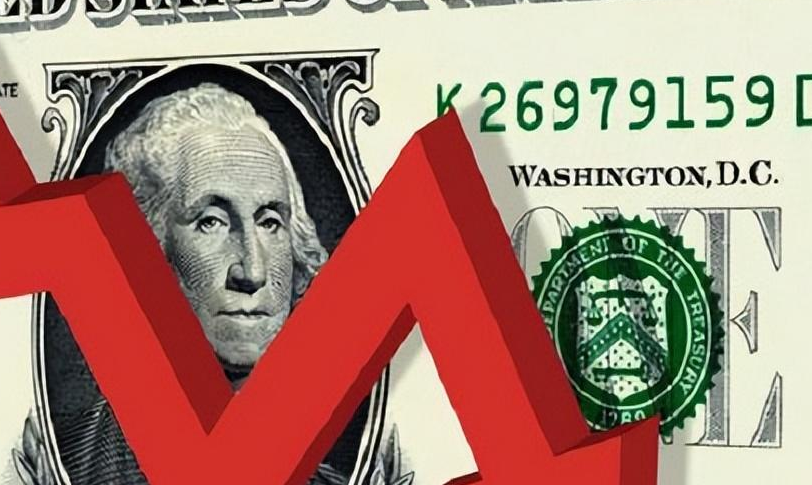U.S. Treasury Yields Plunge Below 4.3%
Advertisements
The current trajectory of the U.S. economy appears to be concerning, with recent data suggesting it could be on the brink of a recession. This troubling scenario is accompanied by fears regarding inflation and rising borrowing costs, which may cause the Federal Reserve to consider interest rate cuts in a stagnating environment. As these worries mount, there has been a noteworthy decline in U.S. Treasury yields, which fell to their lowest levels this year.
On a recent Tuesday, yields across the board saw significant reductions, with the yield on 10-year Treasury notes dropping more than 10 basis points by the day’s end, settling at approximately 4.29%, a marked decrease from Monday’s 4.39%. This level is reminiscent of figures last recorded in mid-December of the previous year. Data from FactSet indicates that this yield has also dipped below the 50-day moving average and is on the downtrend toward the 200-day moving average.
Market traders are now pricing in expectations of a 56 basis point reduction in interest rates by the Federal Reserve by the end of this year, as swap contracts reveal a shaky outlook for the economy.
Commenting on the present climate, Ian Lyngen, the U.S. interest rates strategist at BMO Capital Markets, noted in his report that concerns regarding President Biden's agenda and its potential implications on the global economy have catalyzed a risk-averse mood within the market.
Faltering economic data has illuminated the pressures of inflation coupled with the elevated costs of borrowing. The latest metrics paint a grim picture; for example, the Conference Board’s consumer confidence index showcased an unexpected dip, reaching its lowest point since June of the previous year. Adding to this dismal news, Citigroup’s Economic Surprise Index also fell to its lowest level since September, signaling that economic outcomes have consistently underperformed expectations.
Such disheartening statistics have only amplified fears about a slowdown in the U.S. economy, prompting a substantial drop in Treasury yields. Elias Haddad, a senior market strategist at Brown Brothers Harriman, remarked on emerging signals of trouble in the American economy, stating, “If we see lackluster economic data persist for another month or two, the narrative around the exceptionalism of the U.S. economy will face scrutiny.”
Economic forecasts laid out by Bank of America earlier suggested that the U.S. is in a phase of mild 'stagflation.' Despite the Federal Reserve’s series of interest rate hikes commencing late in 2021, inflation remains stubbornly high, surpassing the target rate of 2%. Recent indicators show that American consumers have elevated their inflation expectations to above 3% for the coming years, while the five-year breakeven inflation rate has surged to a two-year high of 2.61%.
In this context, the anticipation for interest rates to be slashed by the Federal Reserve has intensified dramatically. Traders in the market are gearing up, as reflected in the aforementioned swap contracts showing a predicted cut of 56 basis points before the year concludes.

Another contributing factor to the decline in Treasury yields is the uncertainty surrounding the policies of the U.S. presidential administration. Many market participants are anxious about the potential adverse effects of proposed tariffs and the plans by the Department of Office of Global Engagement (DOGE) to reduce federal employee wages, which may pose risks for the American and global economies.
While the funds earmarked for DOGE’s proposed cuts are relatively nominal, the impact of job reductions within governmental departments could greatly influence the job market. Brij Khurana, a portfolio manager at Wellington Management, indicated that since 2022, job growth in government, healthcare, and education sectors has accounted for half of overall employment expansion, leaving these areas especially vulnerable to DOGE’s proposed revisions.
Mark Cudmore, a strategist at Bloomberg, voiced that the narrative has shifted largely on the matter, stating, “The conversation has transitioned from ‘the new government has yet to deliver on our growth expectations’ to ‘U.S. policies might start causing real damage to the economy’… This is why the yield on the 10-year Treasuries has sunk to its lowest in over two months and might continue to fall significantly in the upcoming weeks.”
U.S. Treasury Secretary Janet Yellen expressed her thoughts on the matter, stating that the 10-year Treasury yield “should naturally decrease” with the implementation of the president's policy changes. Yellen also expressed her and the president’s commitment to enhancing the appeal of U.S. debt instruments. Treasury options trading indicates that investors foresee a continued decrease in 10-year Treasury yields, potentially down to around 4.15%.
SIMULTANEOUSLY, this earlier drop in yields has resulted in heightened demand for U.S. Treasuries, as recent auctions displayed robust interest from buyers, particularly underscored by the strong results from the auction of five-year Treasuries, which exhibited demand exceeding expectations.
The anxiety surrounding the economic outlook extends beyond the bond markets; it is also notably reflected in the performance of U.S. equities. The S&P 500 index has faced consistent declines following its record highs set in the previous week, exacerbated by Walmart’s warnings of diminished earnings, further fueling investor concerns. The government's fiscal policies seem to lack the necessary support to sustain growth, leading to progressively dimming expectations regarding economic performance.
The fundamental question remains whether the current panic about economic growth resembles the situation of last summer. At that time, yielding rates for most benchmark U.S. securities had fallen below 4%, yet, the rapidly implemented fiscal stimulus measures quelled the distress remarkably fast, Khurana explained. Today, however, inflation, rising costs, and political uncertainties cast a long shadow over the economic recovery, maintaining risk aversion in markets and creating a cautious climate among investors.
Post Comment